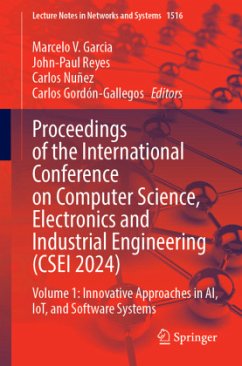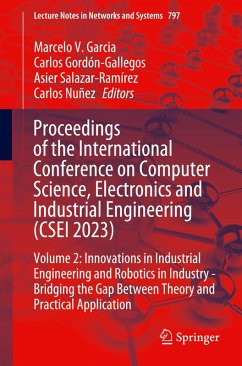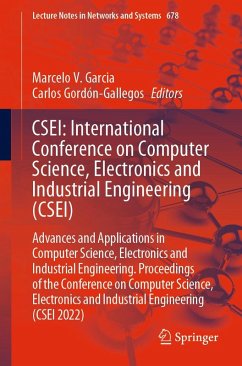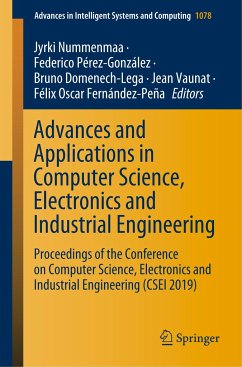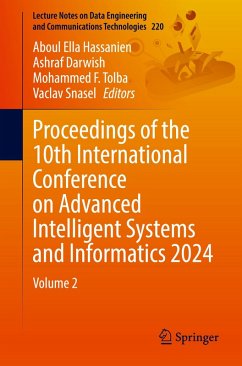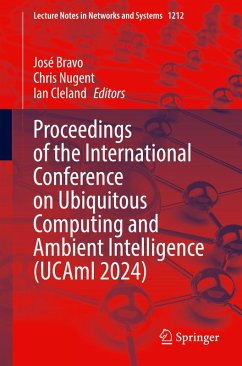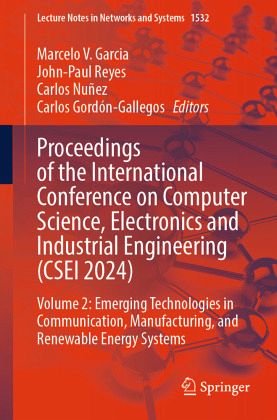
Proceedings of the International Conference on Computer Science, Electronics and Industrial Engineering (CSEI 2024)
Volume 2: Emerging Technologies in Communication, Manufacturing, and Renewable Energy Systems
Herausgegeben: Garcia, Marcelo V.; Reyes, John-Paul; Nuñez, Carlos; Gordón-Gallegos, Carlos
Versandkostenfrei!
Versandfertig in 6-10 Tagen
166,99 €
inkl. MwSt.

PAYBACK Punkte
83 °P sammeln!
This book captures the dynamic spirit of technological advancement and interdisciplinary collaboration showcased at the sixth edition of the conference. This second volume of the proceedings from the VI International Conference on Computer Science, Electronics and Industrial Engineering (CSEI 2024) presents a wide-ranging collection of innovative research under the theme Emerging Technologies in Communication, Manufacturing, and Renewable Energy Systems.The contributions span several key areas where digital transformation is reshaping traditional practices. Educational informatics features pro...
This book captures the dynamic spirit of technological advancement and interdisciplinary collaboration showcased at the sixth edition of the conference. This second volume of the proceedings from the VI International Conference on Computer Science, Electronics and Industrial Engineering (CSEI 2024) presents a wide-ranging collection of innovative research under the theme Emerging Technologies in Communication, Manufacturing, and Renewable Energy Systems.
The contributions span several key areas where digital transformation is reshaping traditional practices. Educational informatics features prominently, demonstrating how virtual reality, augmented reality, and artificial intelligence are creating more inclusive and personalized learning environments. These developments are particularly impactful in areas such as chemistry education, traffic safety training, and the support of learners with special educational needs.
Further chapters explore the integration ofcyber-physical systems and Internet of Things technologies in applications ranging from smart manufacturing to precision agriculture. Healthcare innovation also finds its place, with research on early detection of neurodegenerative diseases and advanced physiological signal processing, reflecting the convergence of digital intelligence and human wellbeing.
The book also delves into transformative approaches in production and industrial engineering. From sustainable agro-industrial processes to occupational safety under the Industry 5.0 paradigm, authors explore how human-centered and environmentally conscious design is becoming a cornerstone of technological development. Software innovations and digital tools highlight the importance of usability and efficiency, with contributions such as gamified rehabilitation systems and agricultural management platforms.
Finally, advances in automated manufacturing and control systems reveal how robotics and real-time monitoringare driving efficiency and resilience across sectors from agricultural automation to aerospace training systems.
The contributions span several key areas where digital transformation is reshaping traditional practices. Educational informatics features prominently, demonstrating how virtual reality, augmented reality, and artificial intelligence are creating more inclusive and personalized learning environments. These developments are particularly impactful in areas such as chemistry education, traffic safety training, and the support of learners with special educational needs.
Further chapters explore the integration ofcyber-physical systems and Internet of Things technologies in applications ranging from smart manufacturing to precision agriculture. Healthcare innovation also finds its place, with research on early detection of neurodegenerative diseases and advanced physiological signal processing, reflecting the convergence of digital intelligence and human wellbeing.
The book also delves into transformative approaches in production and industrial engineering. From sustainable agro-industrial processes to occupational safety under the Industry 5.0 paradigm, authors explore how human-centered and environmentally conscious design is becoming a cornerstone of technological development. Software innovations and digital tools highlight the importance of usability and efficiency, with contributions such as gamified rehabilitation systems and agricultural management platforms.
Finally, advances in automated manufacturing and control systems reveal how robotics and real-time monitoringare driving efficiency and resilience across sectors from agricultural automation to aerospace training systems.



